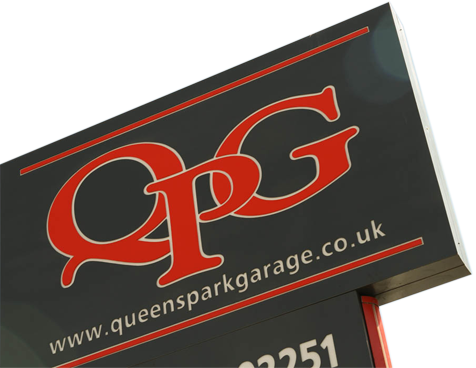Breaking down your brakes, their bits and how everything works
Quite an important subject I think we’ll all agree. We all need to pay attention here as it applies to all of us!
Your brakes are a major component of your vehicle and need to be looked after. Though there are many different braking setups they were all designed to do the same thing, stop you and your vehicle safely, and if not properly maintained they may not be working up to their maximum efficiency.
The most common set up we all have is the disc and pad set up.
But how does this work? A brake disc is attached to the hub of your vehicle which rotates with the wheel, a brake caliper and caliper carrier is situated straddling the disc that houses the brake pads.
When you apply pressure to the brake pedal the caliper squeezes the pads against the disc therefore slowing you down. Think of how the brakes work on your pushbike, it’s a very similar setup, it looks a little like this.
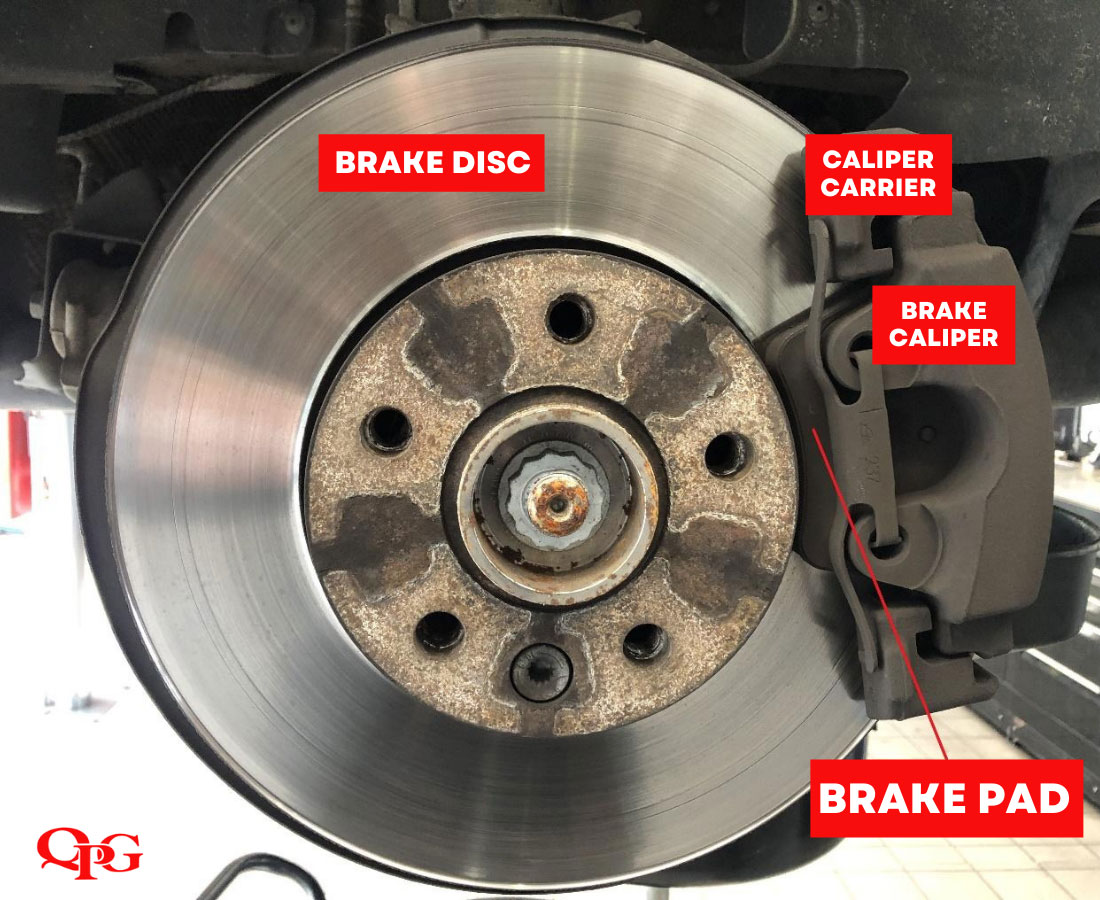
The next type of brake system is the drum setup. Nothing like the musical instrument at all and if it starts doing a Phil Collins style drum solo, you should definitely be concerned!
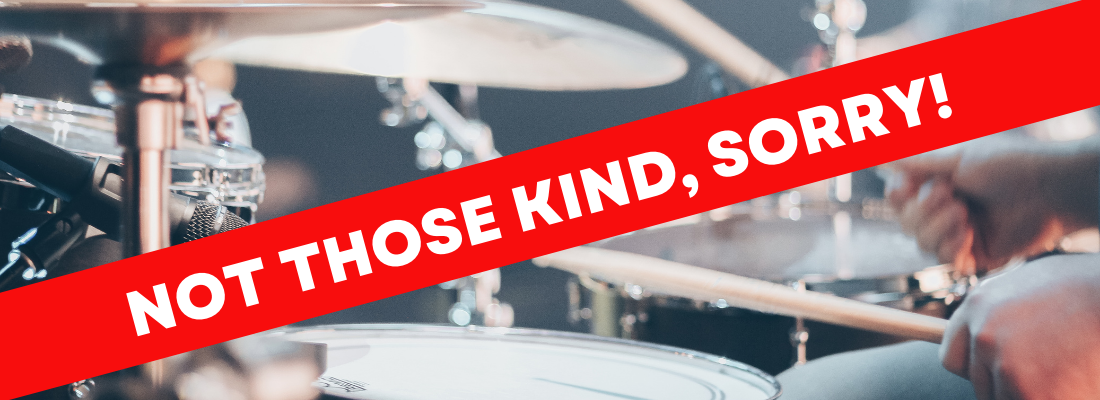
But I digress! The drum setup is a little less efficient as it generates a lot of heat and is all contained within itself. It has two half-moon shaped ‘shoes’ that are situated inside a brake drum.
A wheel cylinder sits in between the upper edges of the shoes and pushes against them when you apply pressure to the pedal, the shoes then contact the drum which is rotating with the wheel, thus slowing you down!
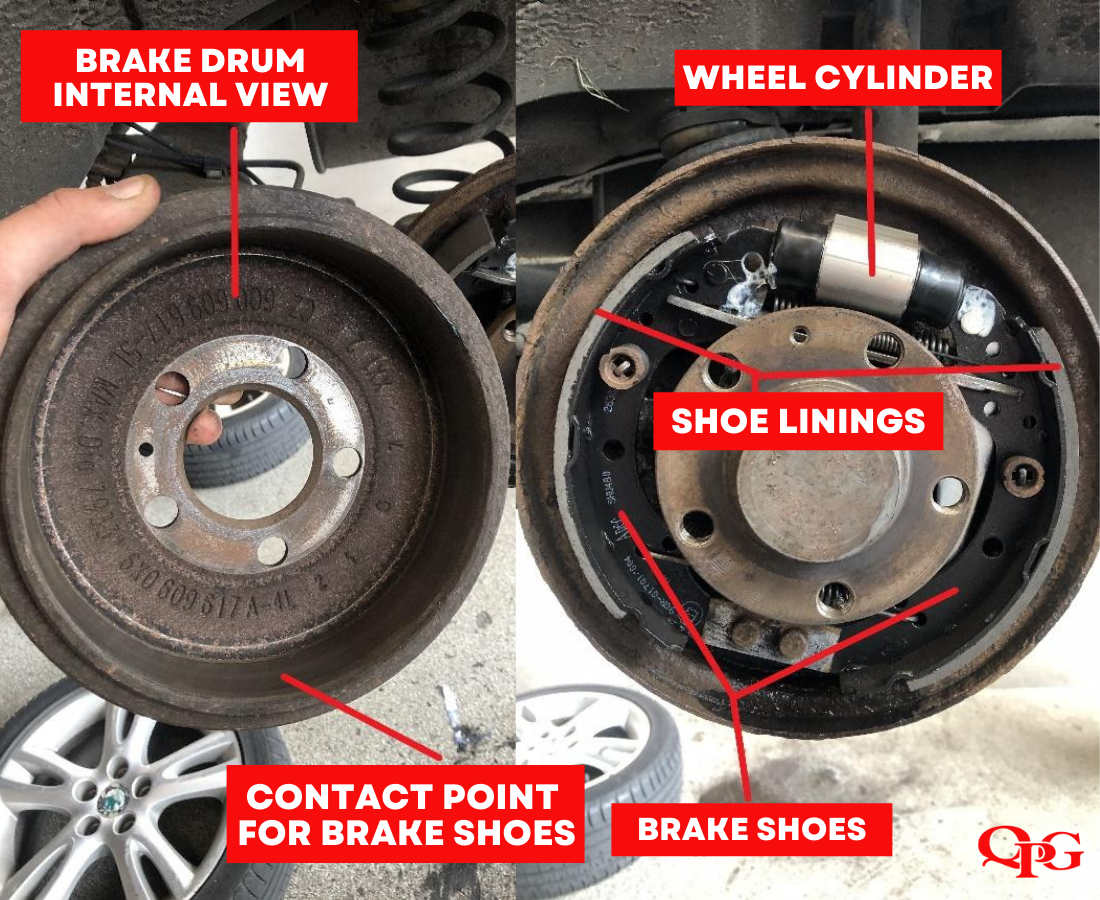
Every modern brake setup has one thing in comment… and it’s probably the most important component, the fluid!
Often overlooked, the brake fluid is what’s called hydroscopic, which means it absorbs water and moisture. It also degrades over time and is recommended to be replaced every 2 years regardless of mileage.
The brake fluid is specially designed to not be able to be compressed.
Let’s take a journey back to school… Do you remember messing around with the syringe in your science class? You can fill it with water, stick your finger over the end of the hole and press the plunger, it will compress the water so far before it starts trying to squirt out the end, goes everywhere and you have to wipe it away with your mate’s jumper before the teacher starts to moan.. so anyway from that experiment, we know water compresses.
Well, brake fluid doesn’t and shouldn’t compress, imagine if you put your foot on the brake pedal and the pedal goes down but your brakes don’t work – scary right?! Well, there’s a name for that – brake fade, but I’ll talk more about that in a minute.
As it absorbs water the brake fluid is not only able to compress but it also starts to have an effect on the rest of the brake components, brake calipers and wheel cylinders can seize because they start to corrode from the inside, causing your brakes to wear prematurely.
This can also generate a lot of heat as, generally when a caliper seizes it will seize on, effectively applying the brake as you’re driving around. This is quite dangerous because as the fluid has absorbed water it has also lowered the boiling point of the fluid now you’ve got a brake binding on which is generating immense heat, that normal fresh clean brake fluid should be able to withstand but it can’t because its old and gravy like – not that I would recommend pouring on top of your roast beef and Yorkshire puddings…
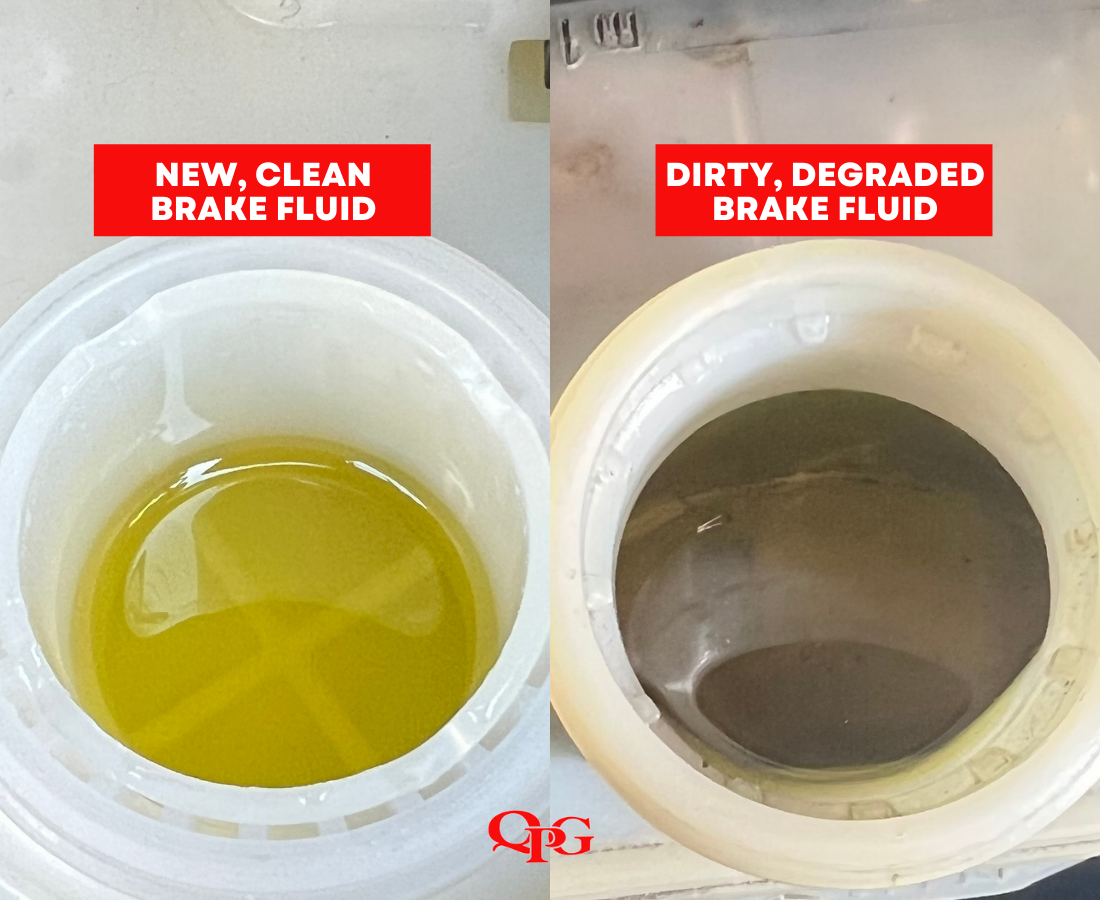
So, what happens when the fluid overheats, I hear you ask?!
Good question, one that I have already answered. Brake fade is what happens!
You put your foot on the pedal and the fluid has overheated so the pedal goes down but you don’t slow down at all!
This has actually happened to me once, and to be honest, as I was cruising towards a New Forest pony at 45mph with no brakes whatsoever, my life flashed before my eyes. It was one of the scariest experiences of my life and I’ve been to Leeds!
OK, so by now we all understand the importance of brake fluid and why it should be flushed every 2 years? – I know I keep going on about it, it seems like I’m addicted to brake fluid, but I promise, I can stop at any time…
Moving on – lets talk about ABS and its function.
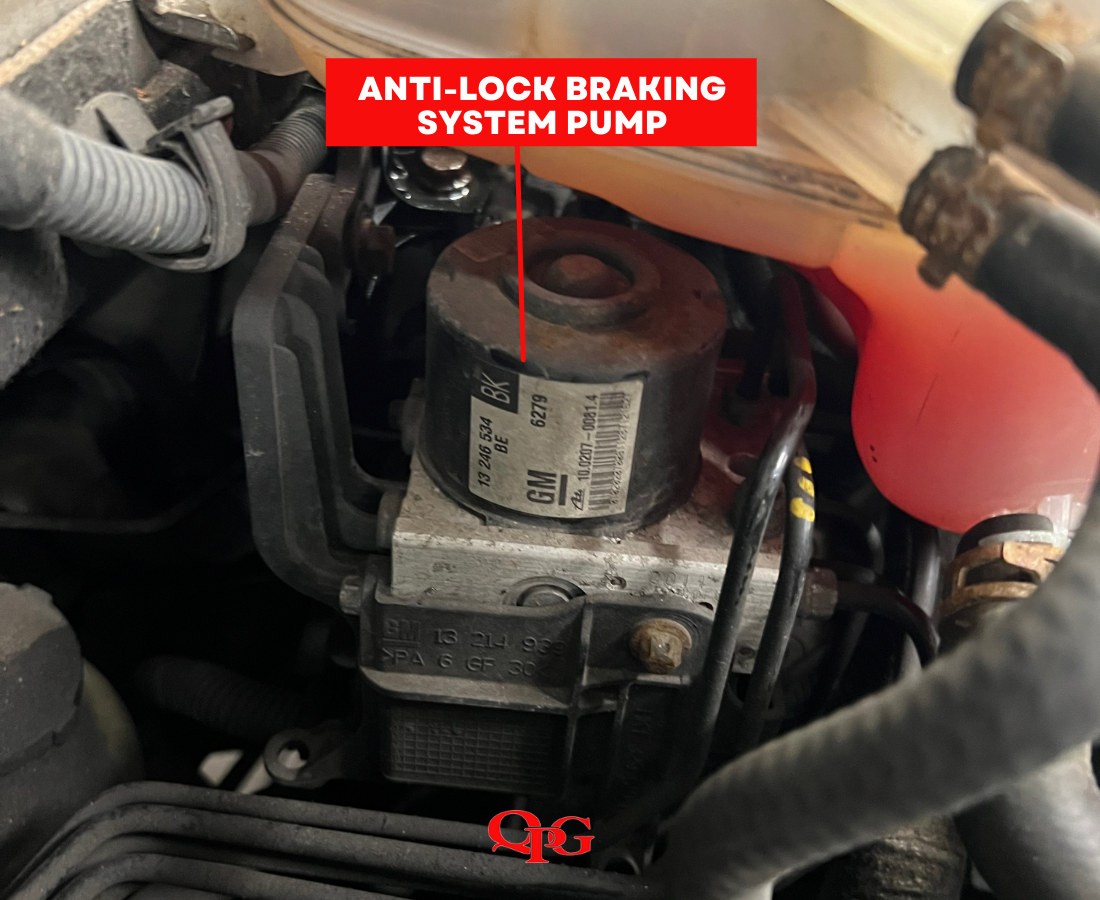
ABS stands for Anti-lock Braking System and like the well-known wood stain, it does exactly what it says on the tin!
If in the unfortunate case of you having to perform an emergency stop, your wheels could lock up causing a skid – not the cool kind the boys do at school discos on their knees to impress the girls but the very scary and dangerous kind, the kind that causes a collision. Years ago before ABS you just used to skid and to stop it you would have to go against everything your body and mind naturally want to do and that’s take your foot off the brake and re-apply it.
Well, nowadays you don’t have to even begin to imagine having to take your foot off the brake in the event of an emergency stop because that’s what the ABS does!
Fitted in the braking system is an ABS pump full of solenoids that are electronically controlled by an ECU, there are wheel speed sensors on every wheel that detect when you’re skidding or not. Upon detection of a wheel locking up, the ABS pump kicks in and activates the solenoids effectively releasing and applying the brake hundreds of times a second preventing you from skidding and bringing you safely to a stop! This can feel a little odd as sometimes, the driver will feel a pulsing from the pedal whilst the ABS is active.
There are a few faults that are common with ABS and we’ll go into them further in the weeks to come! But hopefully now you have a bit of a better understanding of a basic brake setup.
Remember, if in doubt, get it checked out!
Follow us on Instagram, and Facebook to tune in next week for information on brakes, their common problems and how we can fix them.



